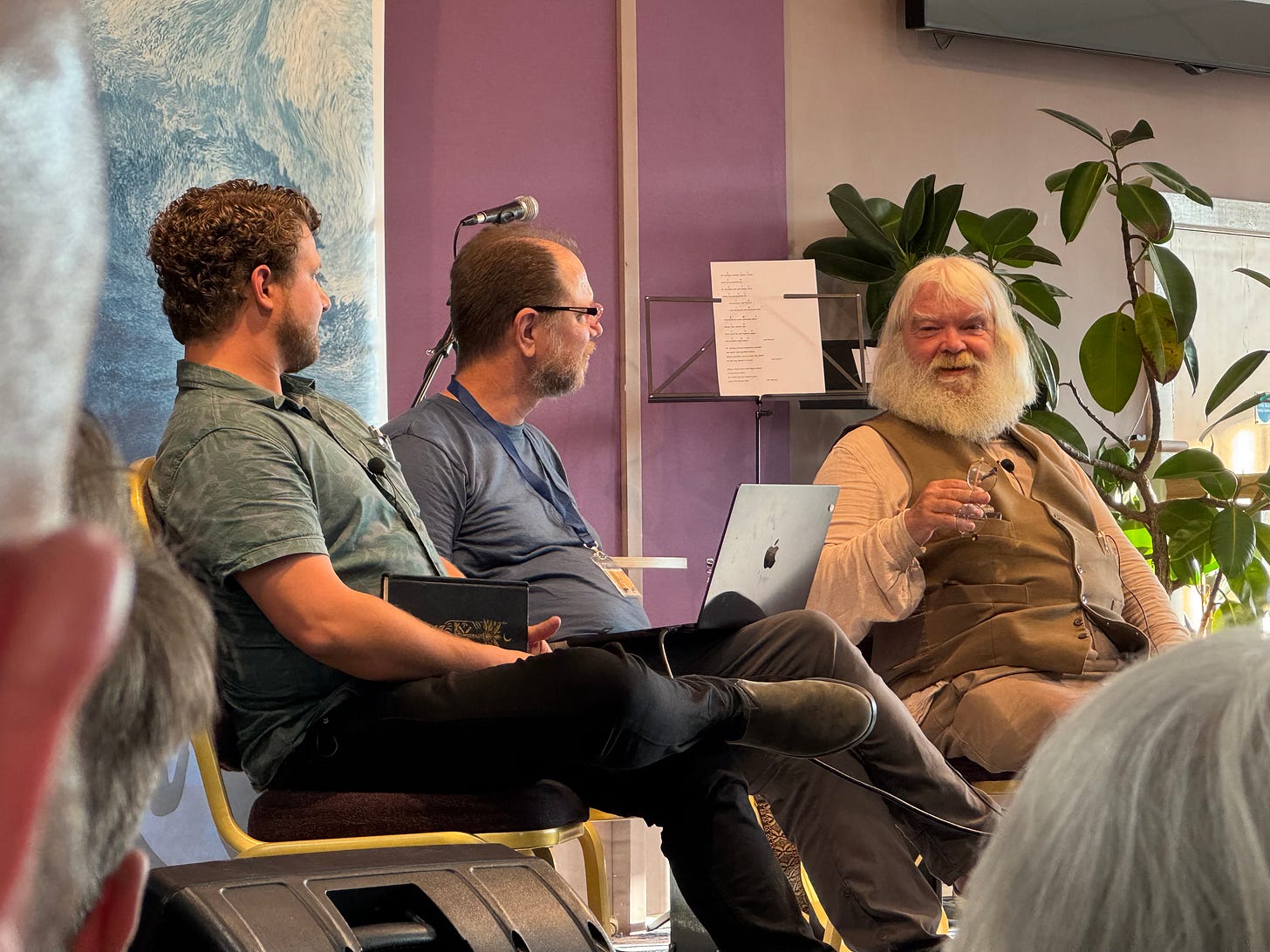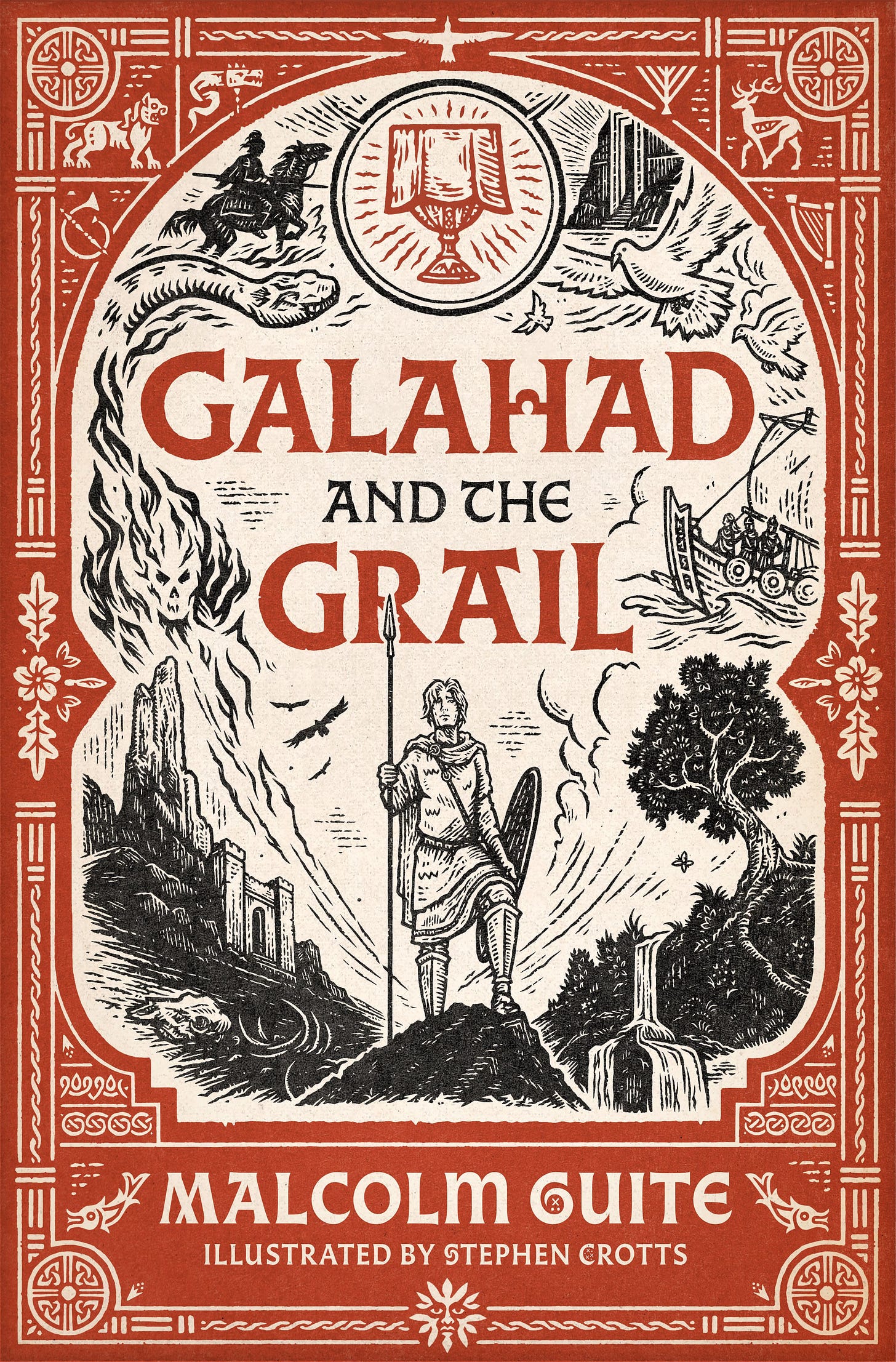An Arthuriad
Four Volumes of Epic Poetry over the Next Four Years
I often wonder what it would have been like to witness the first performance of one of the great works of humankind. Can you imagine attending the City Dionysia in Athens and watching Greek Tragedies by Sophocles & Euripides being performed for the first time ever? Or being present during the first unveiling of the Sistine Chapel ceiling? Or witnessing the first performance of a new Shakespeare play? Did those people (artists & observers alike) understand the full ramifications of what they were experiencing? Did they have any inkling it would stand the hardest test of all—the test of time?
This past week, I witnessed the poet Malcolm Guite recite the first few books of his upcoming epic poem, Merlin’s Isle: An Arthuriad. It’s a four-volume work that recounts the tale of King Arthur within epic verse. It will be released over the next four years, starting with Galahad and the Grail in March 2026.
The tale begins in a fashion similar to the Iliad:
And with the music came these words:
“Poet, take up the tale!
Take up the tale this land still keeps
In earth and water magic sleeps
The dryad sighs, the naiad weeps
But you can lift the veil.
Malcolm Guite looks like what you’d expect an epic poet to look like. He’s also a priest, a sailor, and president of the George MacDonald Society. For this project, Malcolm will be joined by illustrator Stephen Crotts. I’ve followed Stephen’s work over the past few years and am very excited about this collaboration. Pete Peterson of Rabbit Room Press is publishing the book.
I had the pleasure of perusing the British Museum with Stephen last year. I followed him around the early British exhibits as we looked at metalwork from the 400s and beyond. Stephen was particularly interested in artwork that highlighted the shift from paganism to Christianity. You could witness the shift in real time with some works showing elements of both paganism and Christianity. The Arthurian legend bridges that gap in time.
I wonder if this work will stand the test of time. I think it has a really good chance of doing so. It pulls from the threads of other epic poetry, from Homer to Virgil to Milton. It harkens back to the past, taking cues from ancient works. It contains illustrations that enhance the poetry. It’s a story that will likely enchant children and adults alike. It’s a timeless tale, a living myth. I can’t wait to read it.




